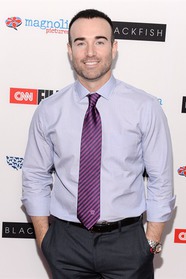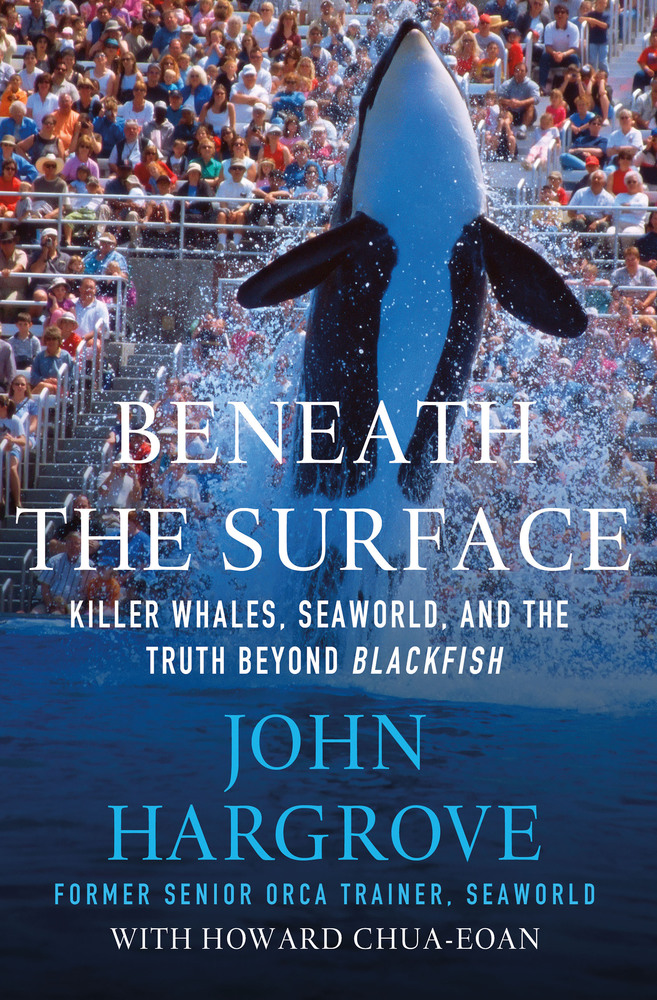 Over the course of two decades, John Hargrove worked with 20 different whales on two continents and at two of SeaWorld's U.S. facilities. In 2012 he resigned his position with SeaWorld, and currently contributes his expertise to an advocacy movement that is convincing legislators to prohibit keeping killer whales in captivity. Hargrove appeared in the controversial 2013 documentary "Blackfish," and his book, BENEATH THE SURFACE: Killer Whales, SeaWorld, and the Truth Beyond Blackfish, is now available. In it, he paints a compelling portrait of killer whales as highly intelligent and social creatures, and argues that SeaWorld's popular programs are both detrimental to the whales and unsafe for trainers. Here, Hargrove shares his experience with one orca, Takara, with whom he formed a true bond --- and the fascinating story of how she saved his life.
Over the course of two decades, John Hargrove worked with 20 different whales on two continents and at two of SeaWorld's U.S. facilities. In 2012 he resigned his position with SeaWorld, and currently contributes his expertise to an advocacy movement that is convincing legislators to prohibit keeping killer whales in captivity. Hargrove appeared in the controversial 2013 documentary "Blackfish," and his book, BENEATH THE SURFACE: Killer Whales, SeaWorld, and the Truth Beyond Blackfish, is now available. In it, he paints a compelling portrait of killer whales as highly intelligent and social creatures, and argues that SeaWorld's popular programs are both detrimental to the whales and unsafe for trainers. Here, Hargrove shares his experience with one orca, Takara, with whom he formed a true bond --- and the fascinating story of how she saved his life.
My orca training career spanned two decades, two continents and work with 20 different killer whales. But none has been as close to my heart as Takara. As I relate in my book, BENEATH THE SURFACE: Killer Whales, SeaWorld, and the Truth Beyond Blackfish, she was at the center of an incident that was both one of the worst things to have happened to me --- but also proof that my relationship with her was one of the best things that any human being could experience. It was my evidence that there can be a true meeting of the hearts and minds of two vastly distinct, extremely social and highly intelligent species.
If any orca is SeaWorld royalty, it is Takara. She is the daughter of Kasatka, the dominant female of SeaWorld San Diego. Killer whale societies are matriarchal --- and so when you are the daughter of the dominant female, you are more than a princess. You are like a warrior princess. Takara and her mother would enforce their will on the rest of the whales of the park by physical strength --- even though they weren’t the biggest whales --- or by force of will. Among the trainers, Kasatka had a reputation as one of the more difficult and most dangerous orcas to work with. But she allowed me to be close to her and I learned to love her --- and her daughter.
 One of the saddest consequences of my decision in 2001 to pursue my killer whale career in France was leaving Kasatka and Takara behind. But years later, when I had rejoined SeaWorld in San Antonio, I was overjoyed to discover that Takara was also being reassigned to Texas. She was a reminder of how happy I was working in San Diego with her mother Kasatka. She arrived by a military C-130 transport in 2009 in a big bin of water that required a crane to lift out of the plane and onto an 18-wheeler. I was with the crew that met her and escorted her to the park.
One of the saddest consequences of my decision in 2001 to pursue my killer whale career in France was leaving Kasatka and Takara behind. But years later, when I had rejoined SeaWorld in San Antonio, I was overjoyed to discover that Takara was also being reassigned to Texas. She was a reminder of how happy I was working in San Diego with her mother Kasatka. She arrived by a military C-130 transport in 2009 in a big bin of water that required a crane to lift out of the plane and onto an 18-wheeler. I was with the crew that met her and escorted her to the park.
It was a wonderful reunion. She continued to understand the behavioral cues I used to give her in California, even though the trainers in Florida, where she had been moved in the interim, had used different ones. We’d have the most terrific time during playtime --- a period when trainers would horseplay with the whales so the orcas wouldn’t feel they were stuck and frustrated in repetitive routines. She’d throw all sorts of things into the air with delight --- including trainers into adjoining pools. I wanted to feel that perhaps she remembered the relationship we had back in San Diego --- and that, perhaps, I reminded her of the happier days when she was still at her mother’s side, before SeaWorld separated them.
I think I got a glimpse into how Takara felt about me when a performance went very wrong. Takara and another whale were supposed to launch me and another trainer, respectively, into the air in a synchronized routine. Unfortunately, the timing was off because the other whale was slower than Takara, who was also more powerful, and so she had to slow down. In the meantime, the loss of momentum caused me to lose my footing on her as we sped toward the surface. I fell forward as we soared into the air, and all 5,000 pounds of her slammed into my side. You can tell from the video recording of the incident that she was trying to avoid hitting me, but it was too late.
Then, as I floated inured on the water, she began circling me, sending out echolocating radar to make sure she knew where I was. Orca echolocation can also tell the whales how injured the object of their radar is. I could hear the waves she emanated --- like the snapping sound of a rubber band. She came to my aid. She responded to my hand signals in the water and pushed me with her pectoral fins toward the side of the pool. And, in a behavior that she was never trained for, gave me the most gentle of pushes and then lifted me so I could make it to the pool’s edge. As I wrote in the book, “She was aware of how important I was in her life; and she wanted to make sure I would be safe.”
My body has never gotten over that injury. But because of it, I know that a whale out there loves me as much as I love her.


